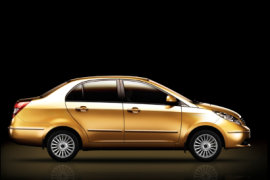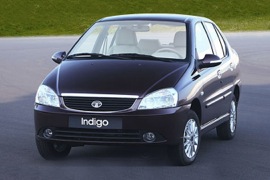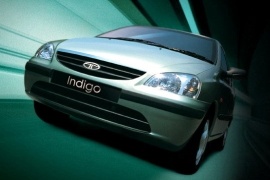TATA MOTORS Indigo Models/Series Timeline, Specifications & Photos
First production year: 2002
Engines: Diesel, Gasoline
The Tata Indigo reached its second generation in 2009, after various updates for its first generation. It was unveiled in October 2009 and it wasn't based on the same platform as its predecessor.
When India needed a cheap car, with low running costs and reliable, the Tata Industry launched the Indica. It was designed and built mainly for the Indian market, but it was also exported in other countries and in Europe. The simple design of the first generation was updated for the 2009 model, Indigo Manza.
Since it was based on the same platform as the Indica Vista and it shared both the name and the platform, the Manza featured the same headlight design and some of the parts until the B-pillar. But, since the Manza was basically the three-box version of the Vista, it had a different C-pillar and ending. Depending on the trim level, the Indica Manza featured alloy-wheels.
Inside, the Manza was offered in various trim levels. Even for the base trim level, the Indica Manza Aqua was equipped with a 2Din audio system. On the upper versions, named Aura, Aura (ABS) and Aura +, the car featured more amenities, including leather seats, airbag and air-conditioning.
Tata Indica Manza was a joint development with Fiat, who provided the 1.4-liter gasoline engine and the 1.3-liter turbocharged diesel unit. Both were mated to a standard 5-speed manual.
The Indian automaker Tata Motors built the Indigo CS as a low-budget, three-box sedan vehicle fit for families and small enterprises, and the idea worked well, at least for the Indian market.
By Indian standards, the Indigo CS belonged to the compact segment hence the name: Compact Sedan, and it was the shortest sedan on the market. For other markets, such as the European one, it was more of a supermini vehicle. Regardless of its size, the car was fit for four adults, some luggage, and, most importantly, a fuel-efficient turbo-diesel engine underneath its hood.
Since Tata Motors tried to keep the development costs down, it used a local design team that transformed the Indica from a five-door hatchback into a sedan by adding a trunk in the back. Thus, the front fascia was similar, with triangular-shaped headlights, rounded at the corners, and a simple grille with two horizontal slats for the base trim levels. The upper ones boasted additional ornaments on it and a pair of fog lamps in the lower bumper. From its profile, the doors were the same as on the Indica.
Inside, the Indigo featured fabric upholstery and cranked windows, while the vinyl upholstery was on the options list. The front seats were flat, and the driver fronted a three-spoke steering wheel. On the instrument panel, Tata installed a wide speedometer and tachometer that sported additional gauges at their bottom for the water temperature and fuel level, respectively.
Tata Motors sold the vehicle with either a 1.2-liter gasoline or a 1.4-liter turbo-diesel engine, and all versions were paired with five-speed manual transmissions.
In 2002, Tata Motors introduced the Indigo on the market as a low-budget sedan for the Indian market, and it succeeded in attracting many people to buy it.
While many carmakers are trying to build vehicles with more and more features, Tata Motors tried to do the exact opposite. It tried to create a cheap vehicle good enough to carry four people inside and some luggage in the trunk. Moreover, since the sedans were considered more upscale than hatchbacks, the automaker made it that way.
The Indigo followed the new-edge design styling, which combined arches with sharp corners. Even though that trend started to fade away in other markets, Indian customers still appreciated it. Thus, the headlights were triangular-shaped but with slightly curved lines. Indigo's front end was short and followed by a tall greenhouse related to the vehicle's length. At the back, the trunk looked like it was added after the initial project was launched, and that is true since the car was based on the Indica model, which was a hatchback that was introduced in 1998.
Inside, the standard version featured cranked windows and a simple ventilation system. But customers could opt for power windows and even an AC unit, which was in high demand in India. Thanks to the tall greenhouse, the seats were mounted a tad higher than usual, and that allowed the carmaker to create more legroom for the passengers seated in the back on the bench.
Under the hood, Tata installed a choice of gasoline and turbo-diesel engines, all with a 1.4-liter displacement. That solution led to a lower manufacturing cost and thus a lower selling price. That's what India needed in those times. The car eventually was even exported to other countries, although with limited success.


